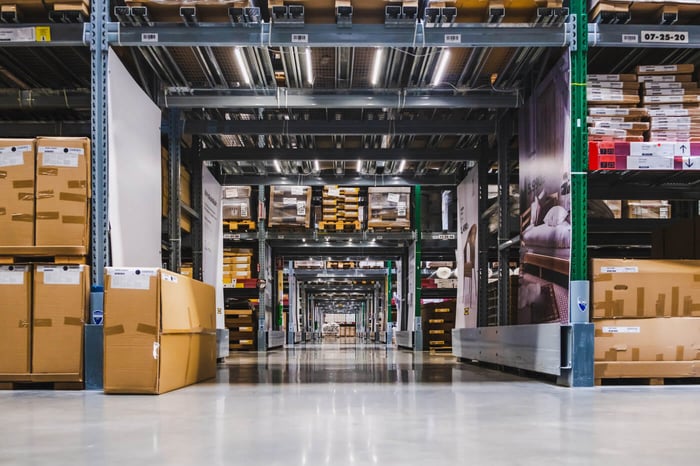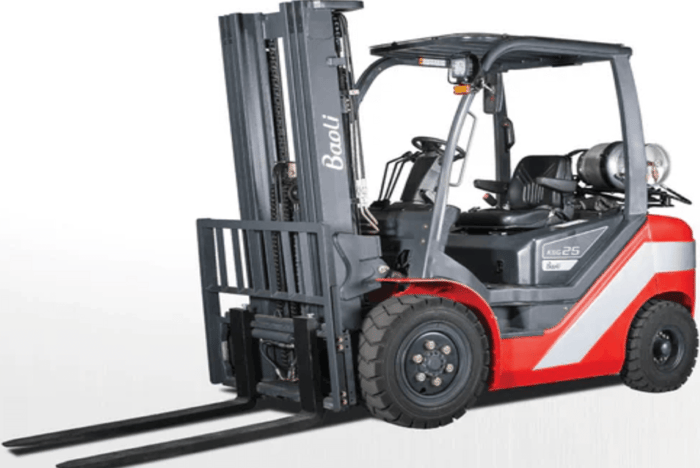In supply chain management, the efficiency of inventory management directly impacts a company's bottom line. That means an efficient warehouse design is crucial for optimizing operations.
Whether you're setting up a new facility or revamping an existing one, there are ten distinct principles to consider. In this guide, we’ll cover the 10 most important factors to implement in your next build-out or renovation.
But first, let’s consider the importance and benefits of learning more about them.
The Importance of Warehouse Design
Warehouse design plays a pivotal role in enhancing operational efficiency. With a well-thought-out design, warehouses can optimize processes and overall performance. Even improve employee morale.
Before we get into these principles, let’s cover three benefits you’ll gain from investing in yours.
-
Increased Productivity: Studies have shown that well-designed warehouses can significantly increase productivity. For example, a study by the International Journal of Production Economics found that efficient warehouse workflows resulted in a 20-30% increase in productivity. This increase directly contributes to improved operational efficiency and, ultimately, higher profits.
-
Cost Reduction: Overall, an efficient layout can lead to significant cost savings. By optimizing space and streamlining workflows, companies reduce overhead costs overall. From costs associated with inventory storage to handling and labor, too. According to the Aberdeen Group, companies that invest in warehouse design see a 20% reduction in overall logistics costs.
-
Improved Customer Satisfaction: The design of your warehouse doesn't just impact internal operations. It also influences customer satisfaction and loyalty. A well-designed warehouse enables -
-
Faster order fulfillment
-
Accurate inventory tracking
-
Timely delivery
All of which contribute to a better customer experience. Research by PwC found that companies with highly efficient warehouse operations report higher customer satisfaction rates and increased repeat business. Ultimately leading to improved profitability.
Warehouse Design: 10 Principles to Consider
Now, that you know the benefits, how can you reap them? Next, find out how to streamline operations with 10 principles for efficient warehouses.
Space Utilization
Space utilization is pivotal for warehouse efficiency. It helps maximize every square foot for optimal storage and workflow. To help, strategic layout planning and shelving systems minimize wasted space and congestion. A strategy that enables the smooth movement of goods and personnel.
Efficient space utilization also facilitates easier inventory tracking and faster picking processes. Storage solutions like vertical racks can help support this and make the most of the available square footage.
As you grow, be sure to conduct regular audits of space to continue using every inch of the warehouse effectively.
Inventory Classification
Inventory classification is the backbone of efficiency. It describes the organization of products based on various criteria. Like demand, value, or storage requirements.
By categorizing items, it streamlines storage, retrieval, and replenishment processes. High-demand or perishable goods are placed strategically for quick access, reducing picking time.
Moreover, it aids in inventory control, preventing overstocking or stockouts, and optimizing space utilization. With a clear classification system, employees can navigate the warehouse swiftly, enhancing productivity and reducing errors.
Optimized Workflow
Designing a workflow that minimizes travel distances and optimizes picking routes enhances productivity. For instance, techniques like zone picking, batch picking, or wave picking streamline operations and reduce order fulfillment time.
An optimized workflow can be supported by equipment like forklifts for moving larger items, faster, and reaching areas of the warehouse (like those deeper spots we just mentioned) more efficiently.
Safety Measures
No matter how efficient your operation becomes, the safety of your employees must always come first. Therefore, prioritizing safety is paramount in warehouse design. Implementing tactics such as -
-
Proper signage
-
Clear aisle markings
-
Safety barriers
-
Regular safety training for staff
Can all help mitigate accidents and ensure a secure working environment. Implementing robust safety measures in a warehouse not only safeguards employees but also enhances efficiency. When workers feel secure, they focus better on tasks, leading to smoother operations and increased productivity.
Technology Integration
Whether we like it or not - AI and technology are the waves of the future. Embracing technology such as warehouse management systems (WMS), barcode scanning, and RFID tracking enhances -
-
Accuracy
-
Efficiency
-
Inventory visibility
By integrating these technologies into your operation, operators can not only optimize processes but also improve overall performance and often provide insightful analytics.
Flexibility and Scalability
A warehouse design that accounts for flexibility enables easy adaptation to changing business needs and growth. To give your warehouse room to grow, modular storage systems, adjustable shelving, and configurable layouts allow for quick reconfiguration as demand fluctuates.
As we mentioned earlier, conducting regular audits of your warehouse is also helpful to ensure you’re making adjustments to bottlenecks.
Climate Control
Depending on the type of goods you’re storing, climate control may be necessary to maintain optimal storage conditions. For instance, a warehouse for chocolate products should consider the optimal temperature for storage.
That means factors like temperature, humidity, and ventilation need to be carefully controlled to preserve product quality.
Additionally, environmentally friendly practices, such as energy-efficient lighting and waste reduction measures, align with sustainable business practices and can help you save on overhead costs.
Cross-Docking Efficiency
Cross docking is the practice of unloading goods from incoming trucks and loading them directly onto outbound trucks. A practice that reduces minimal storage time and boosts warehouse efficiency.
By bypassing storage, it reduces handling, labor, and inventory costs while speeding up order fulfillment, ultimately streamlining operations and enhancing customer satisfaction.
Incorporating cross-docking capabilities into your warehouse makes the direct transfer of goods that much more efficient. The art of cross-decking and having the space to do so minimizes storage time and decreases handling costs.
Visibility and Transparency
Enhancing visibility and transparency throughout the supply chain is essential for effective inventory management. Real-time tracking of movements, accurate stock levels, and timely reporting enables informed decision-making and proactive inventory control.
Continuous Improvement
Adopting a culture of continuous improvement ensures that warehouse operations evolve to meet evolving demands and challenges. Conducting regular performance evaluations, feedback mechanisms, and process optimization initiatives drives efficiency gains and operational excellence over time.
Improving Your Warehouse Design with BMH
Because the design of your warehouse can directly affect your operation’s bottom line and overall success - these 10 principles are just the start. Designing an effective inventory warehouse requires a strategic approach that considers these principles.
By adhering to these principles, businesses can build warehouses that serve as strategic assets, supporting their growth and competitiveness in the dynamic world of supply chain management.
Not sure where to start? Call in the experts to help. BMH is one of the fastest-growing companies in the material handling space, having grown 732% year-over-year in 2022. Learn more about BMH, browse our supplies, or explore the services we offer for warehouse design and operational optimization.




